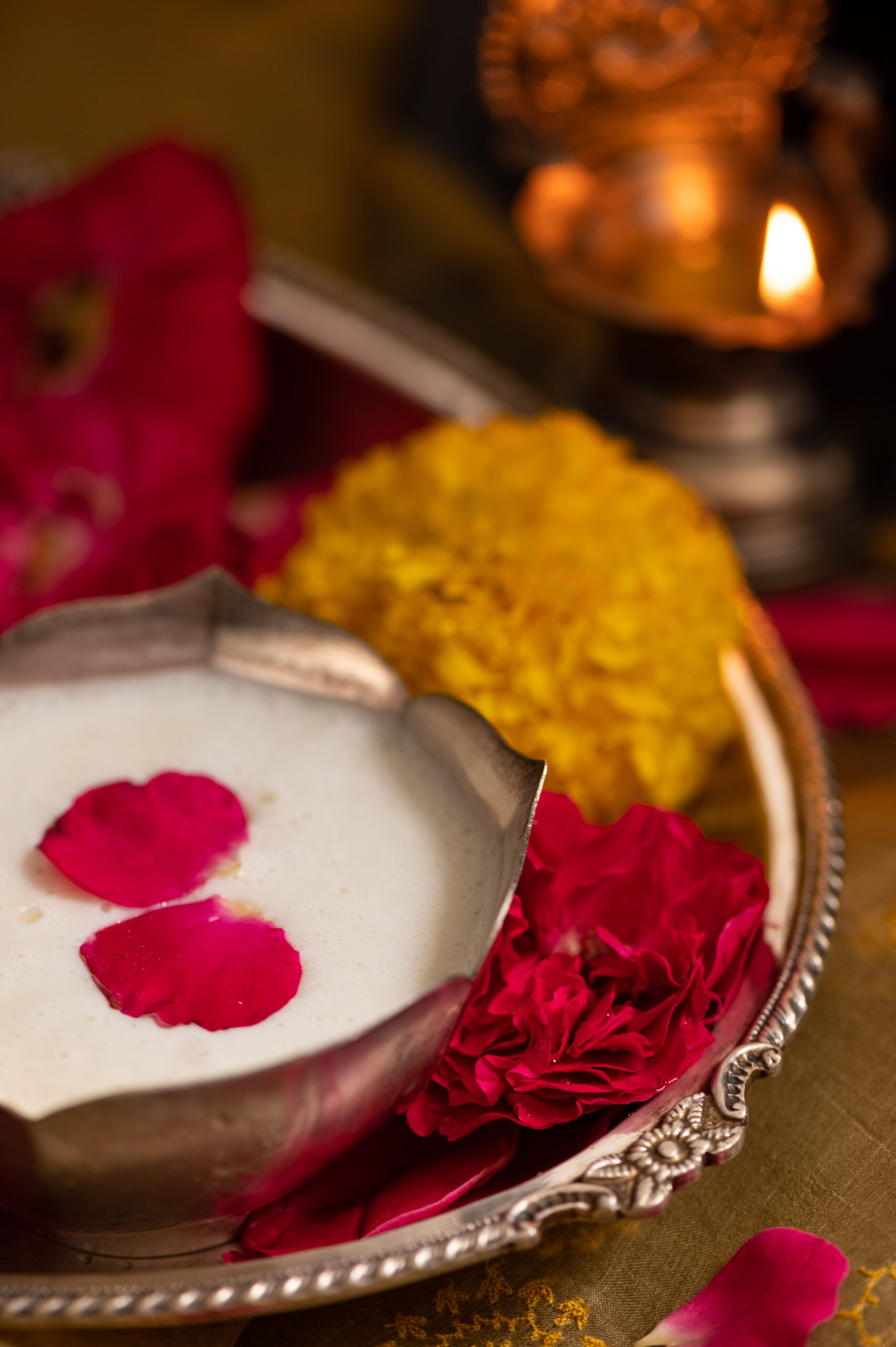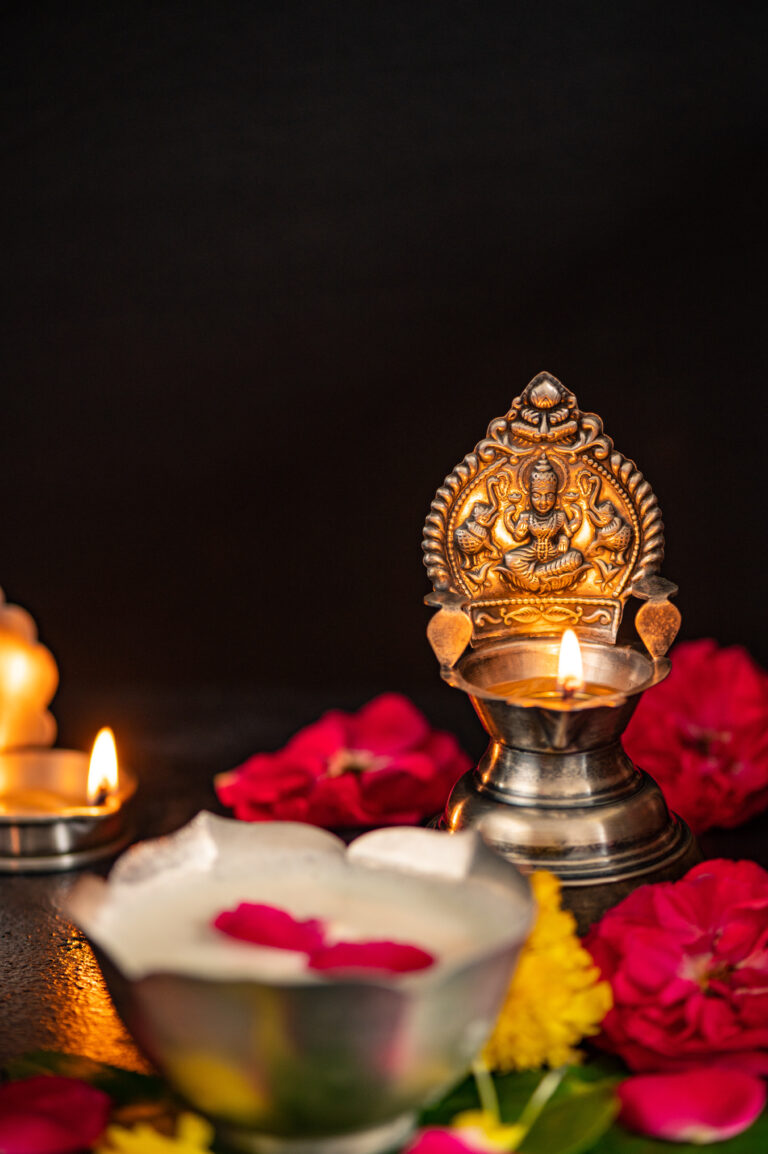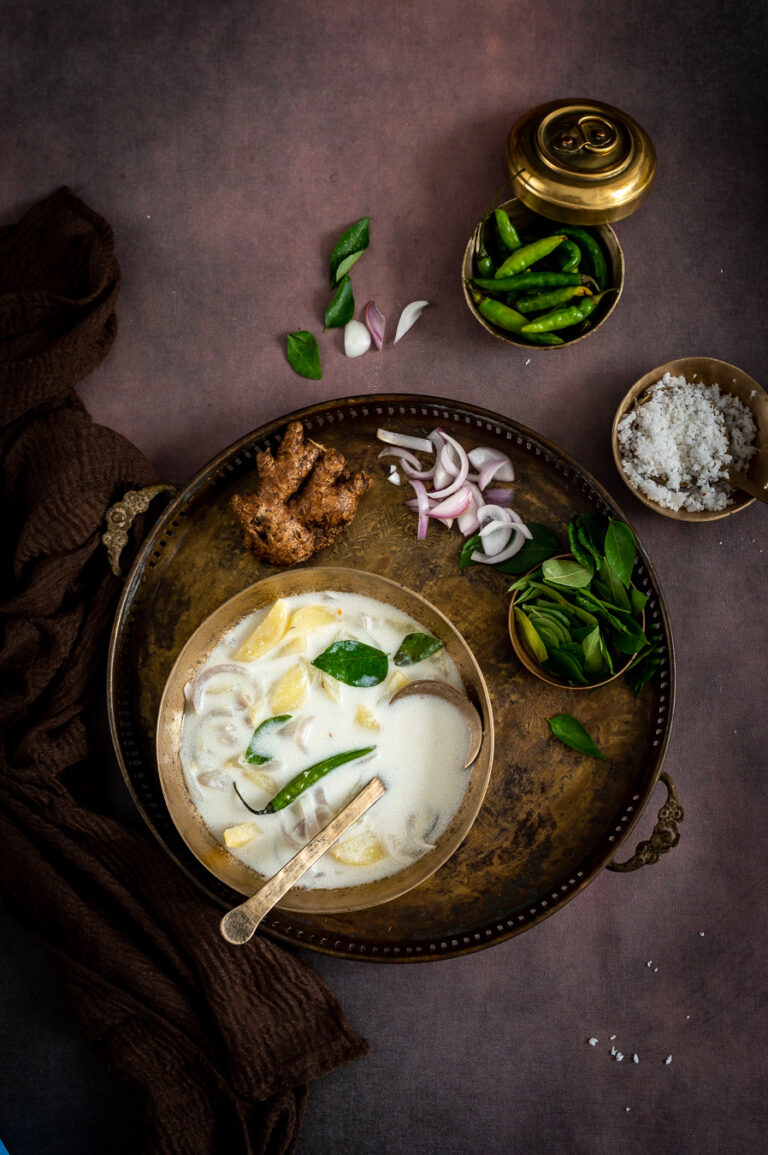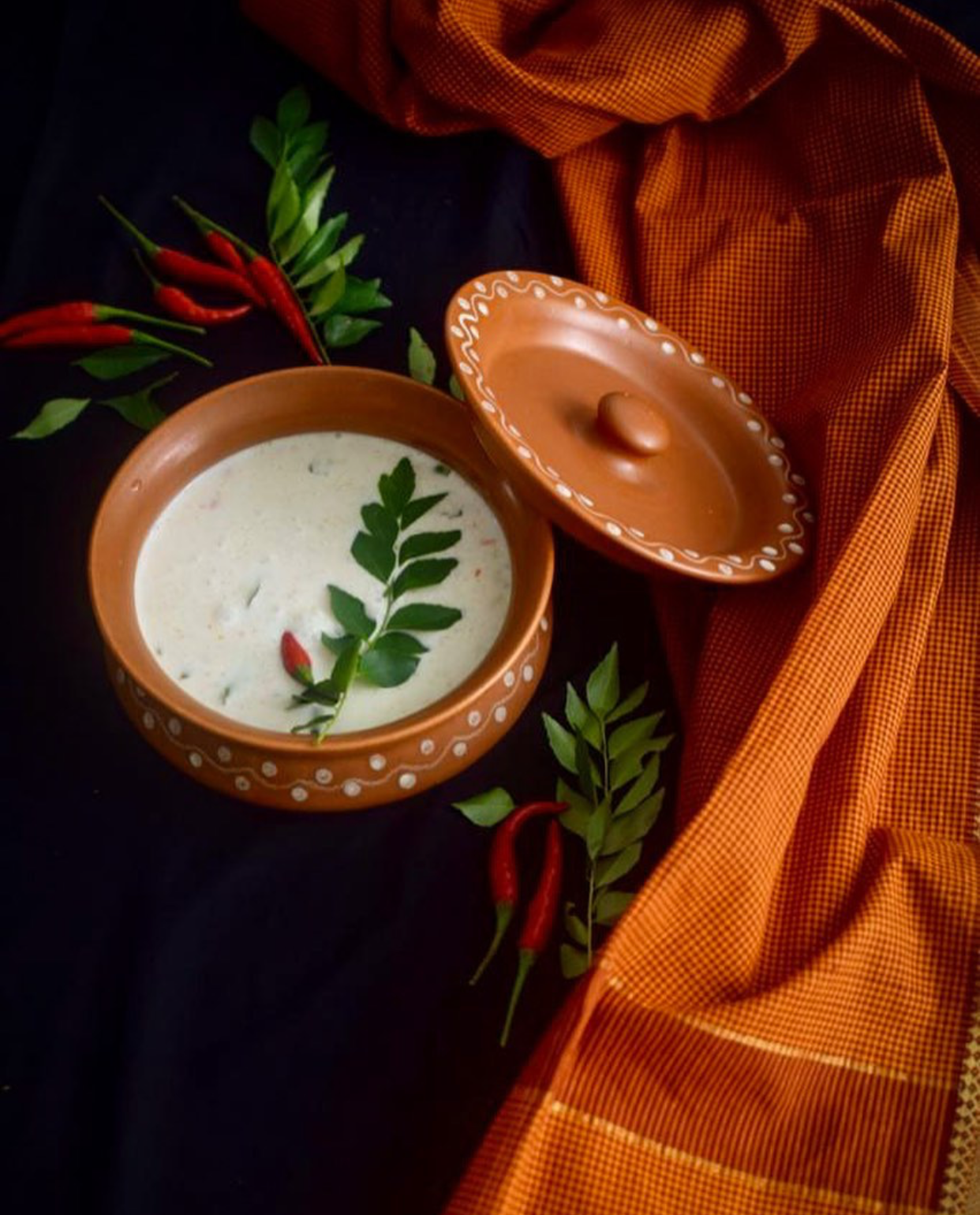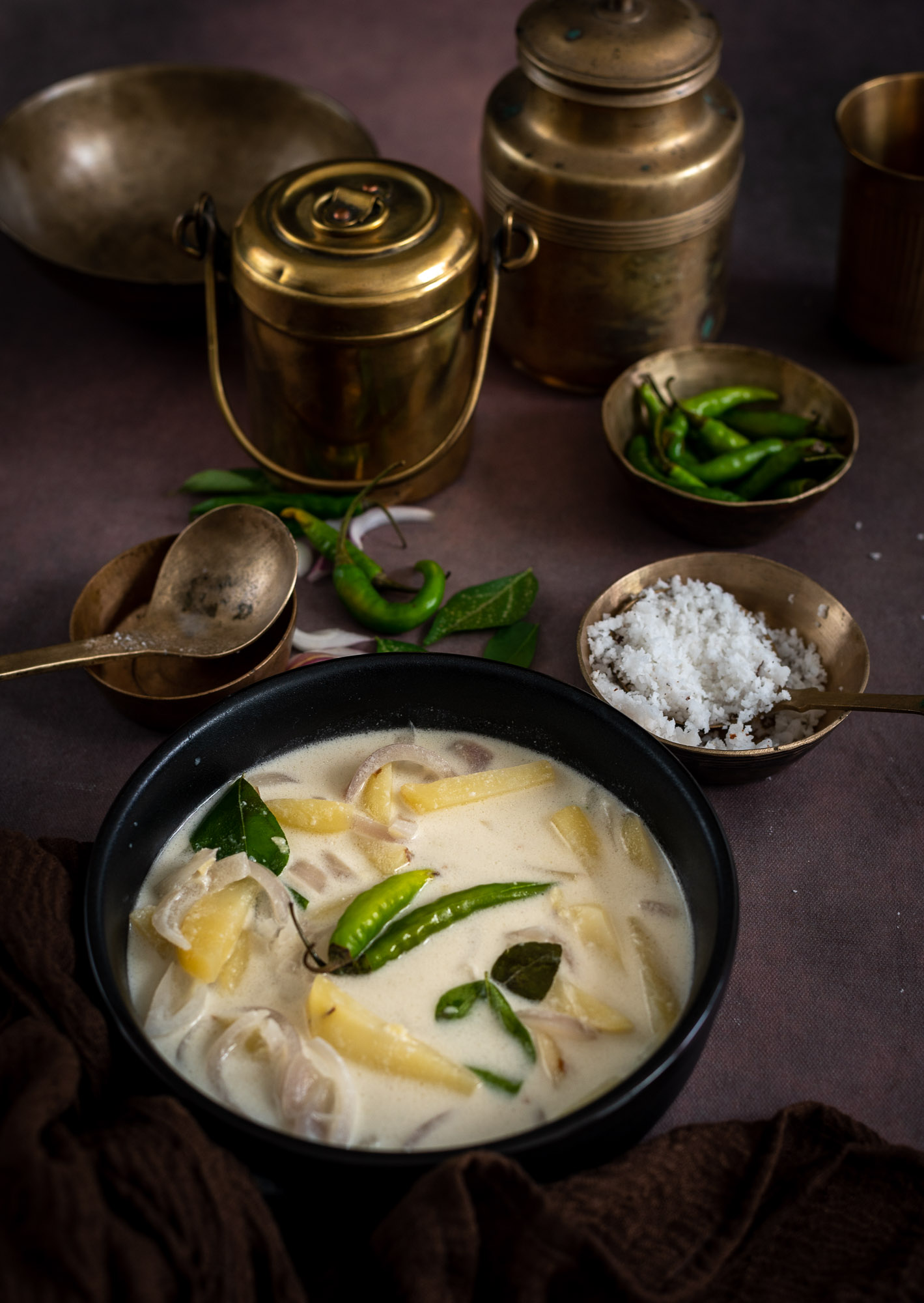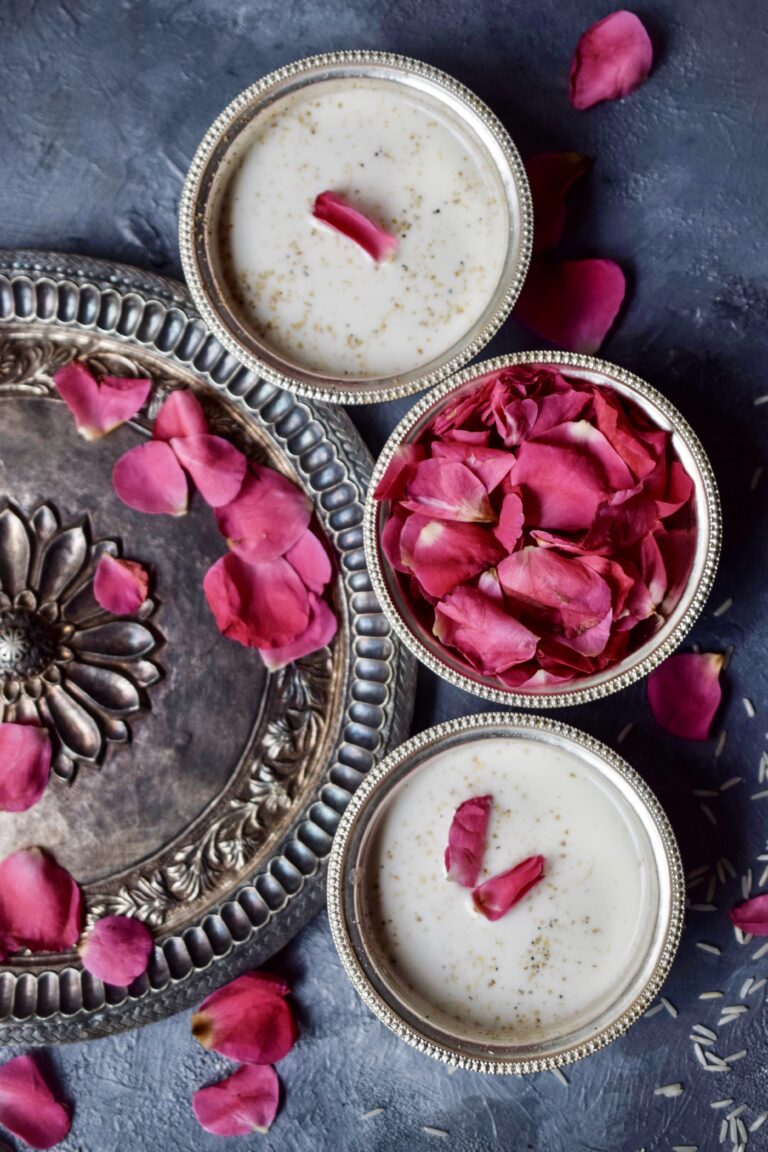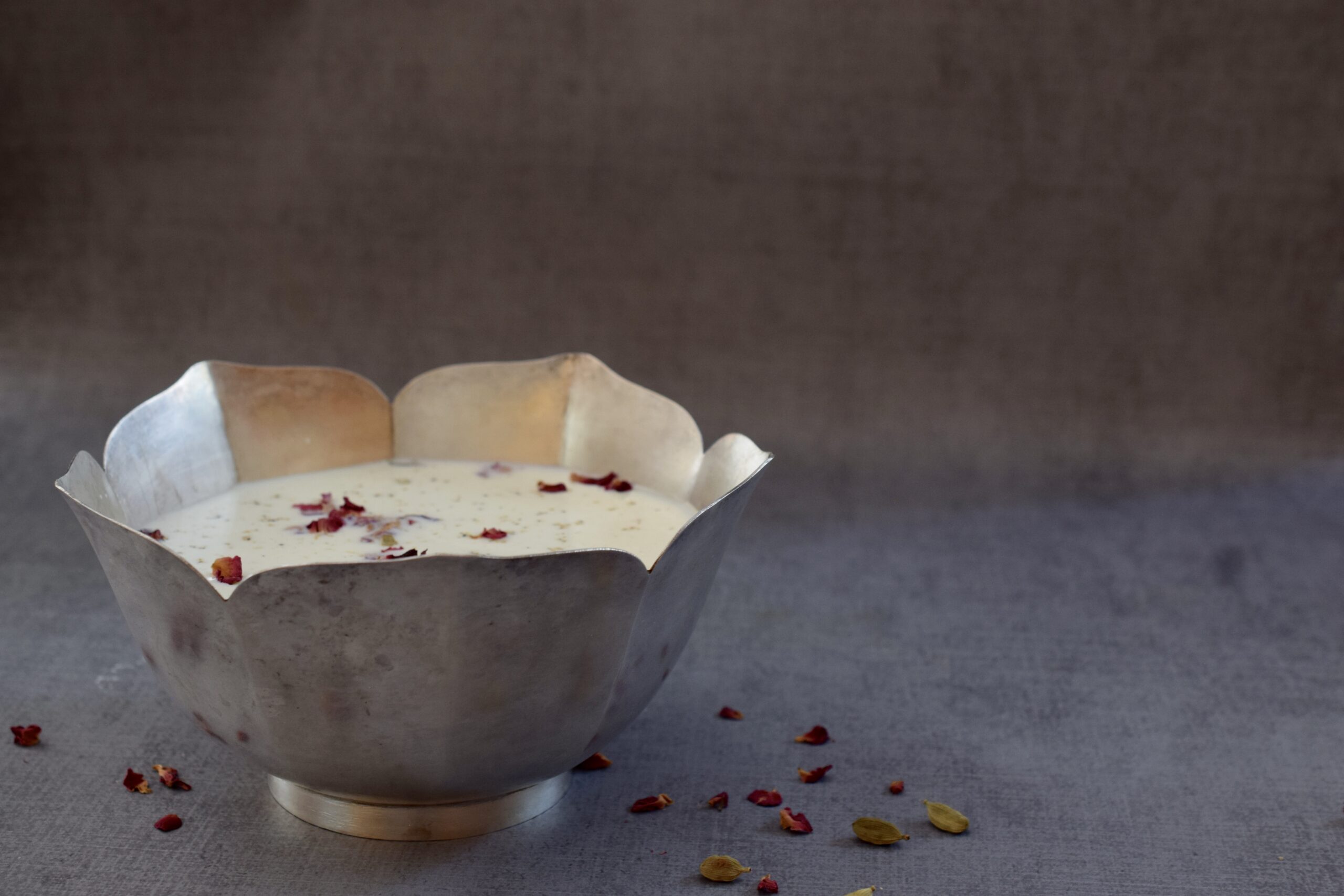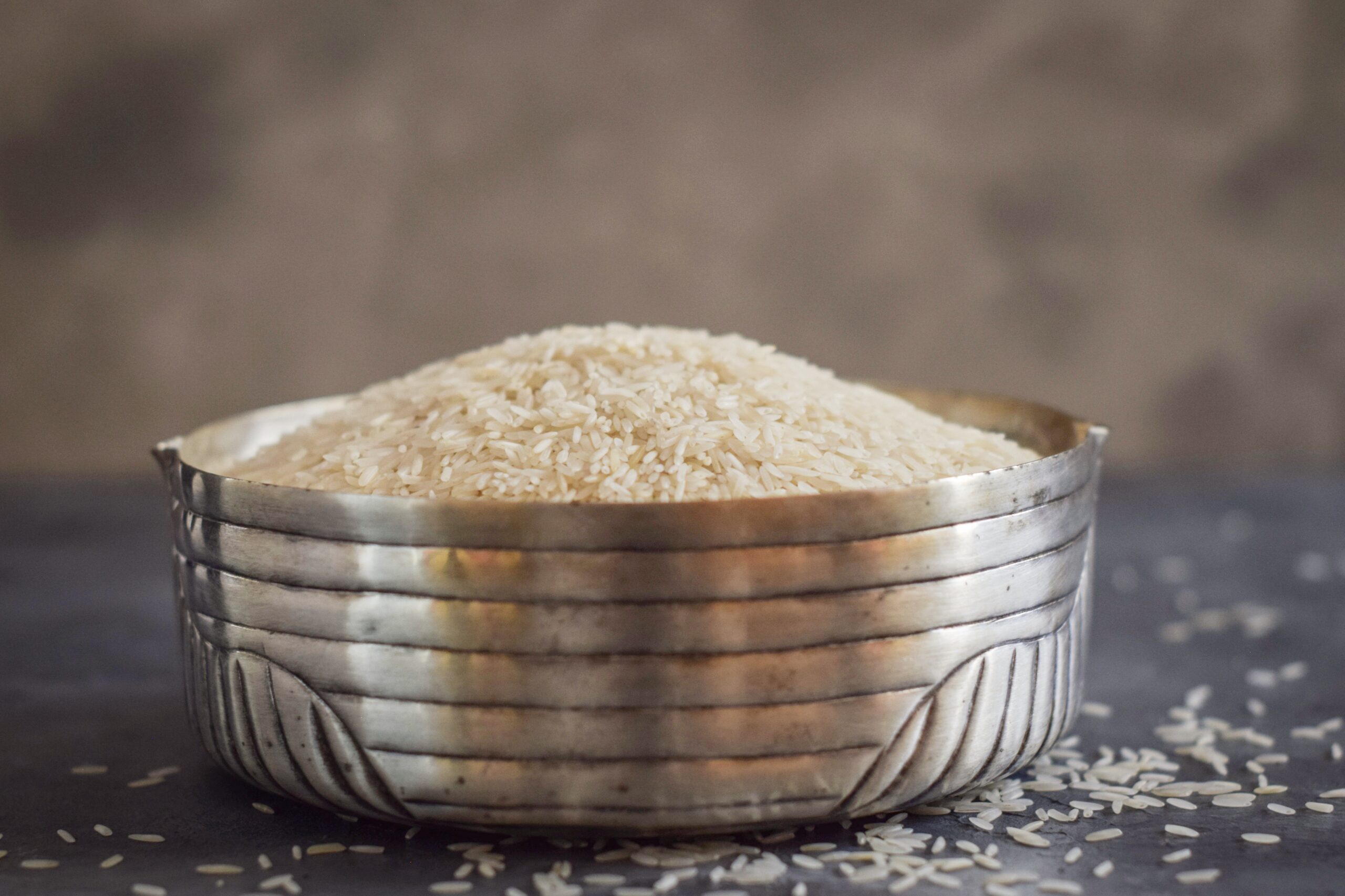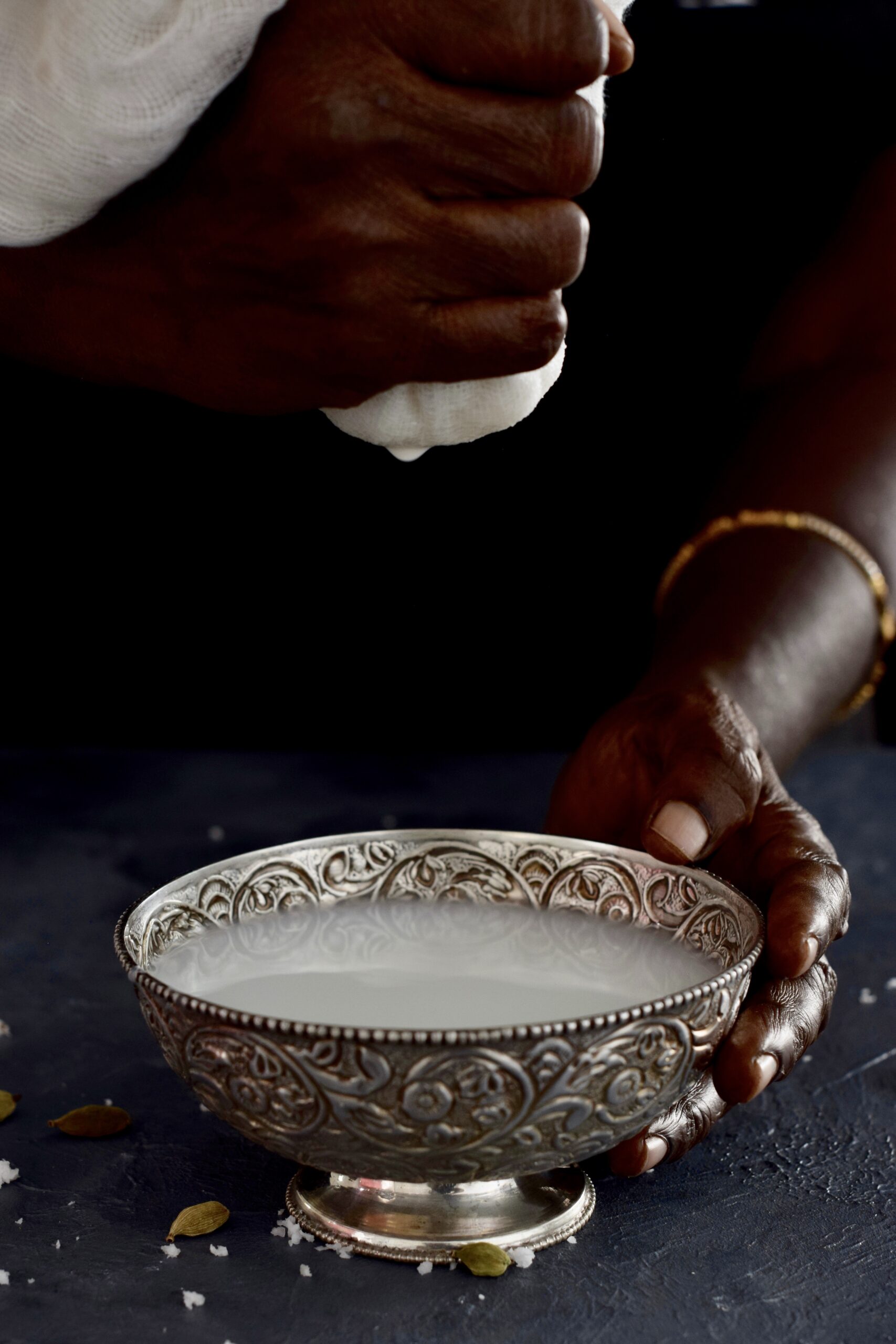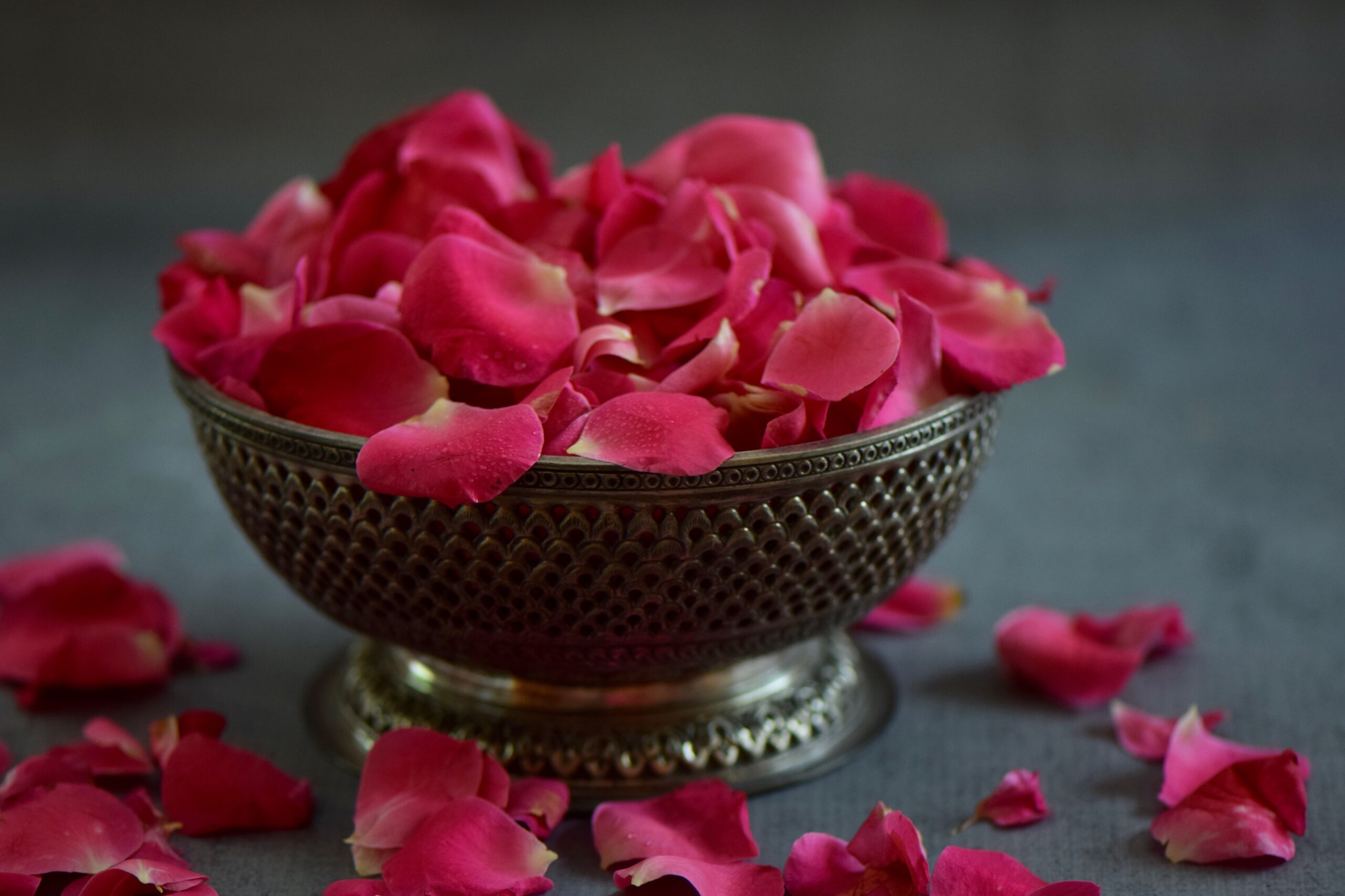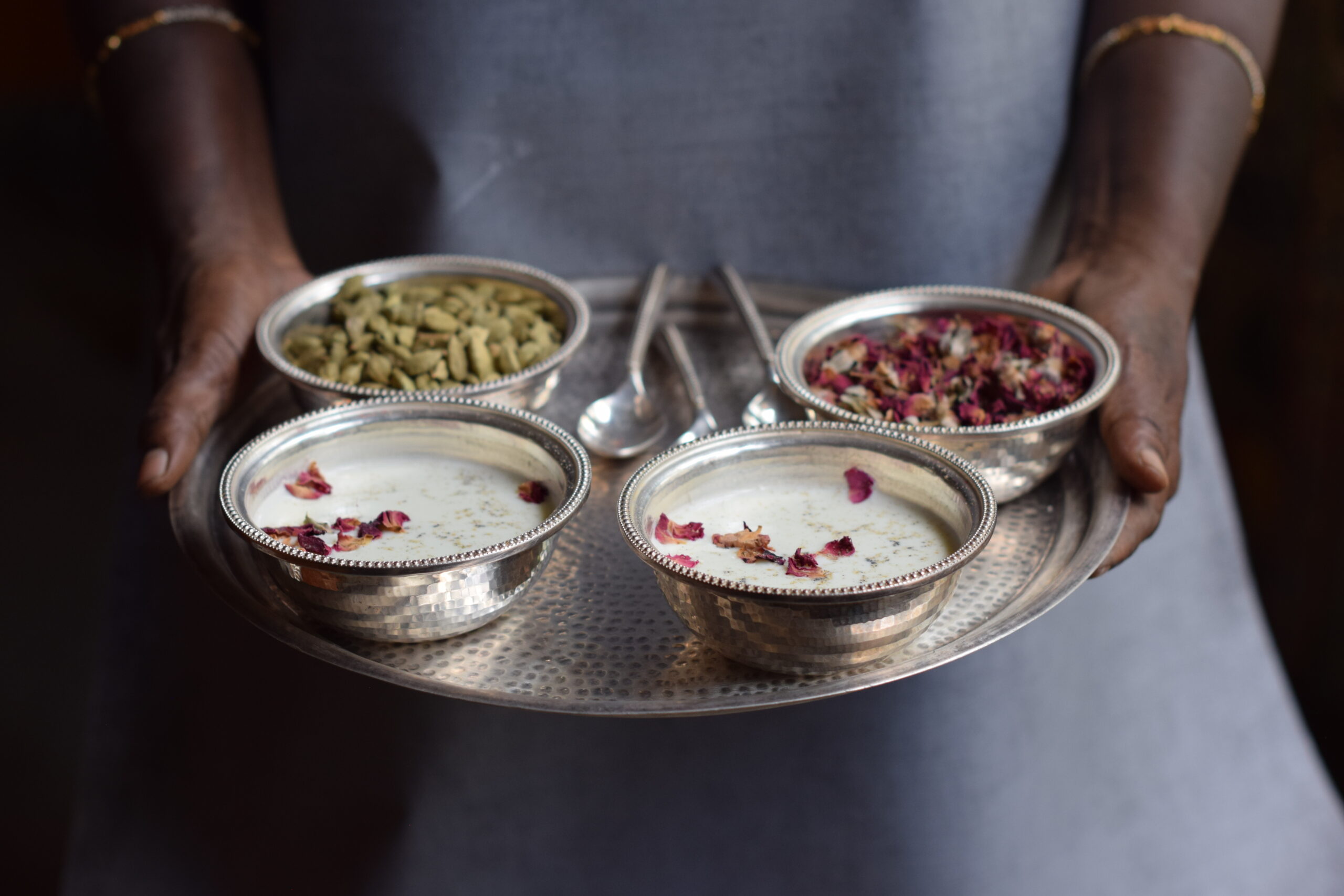And so, the coconut series comes to a sweet finish with a dessert, just in time for Diwali! The first time that I had this coconut pudding was at a friend’s potluck, a long time ago. I had not yet started re:store then or become known for my baking, and so my standard contribution was always some kind of traditional Gujarati fare, like a kachori or a dal dhokli. Each of us would bring something, and we would partake in a lovely and diverse feast together. It was at one such gathering that I first encountered this sublime coconut pudding. Whose preparation it was, and at whose house, blurs in my mind. Every one of the posts in this series (podi, oil and stew) has involved the inspiration of one or several friends of mine, and while I wish I could recall exactly who inspired this one, I can say with certainty that my friendships were a big part of it too.
Despite forgetting the other details, I still remember vividly that first coconut pudding itself. It looked very pleasing to the eye, giving off a sense that it would be cool and refreshing. The first spoonful confirmed my expectations. It was just fabulous, and tasted so light. I can recall that it was summer at the time, but the elements and sensations of the dish are the same no matter when in the year you have it. It is simply a delight.
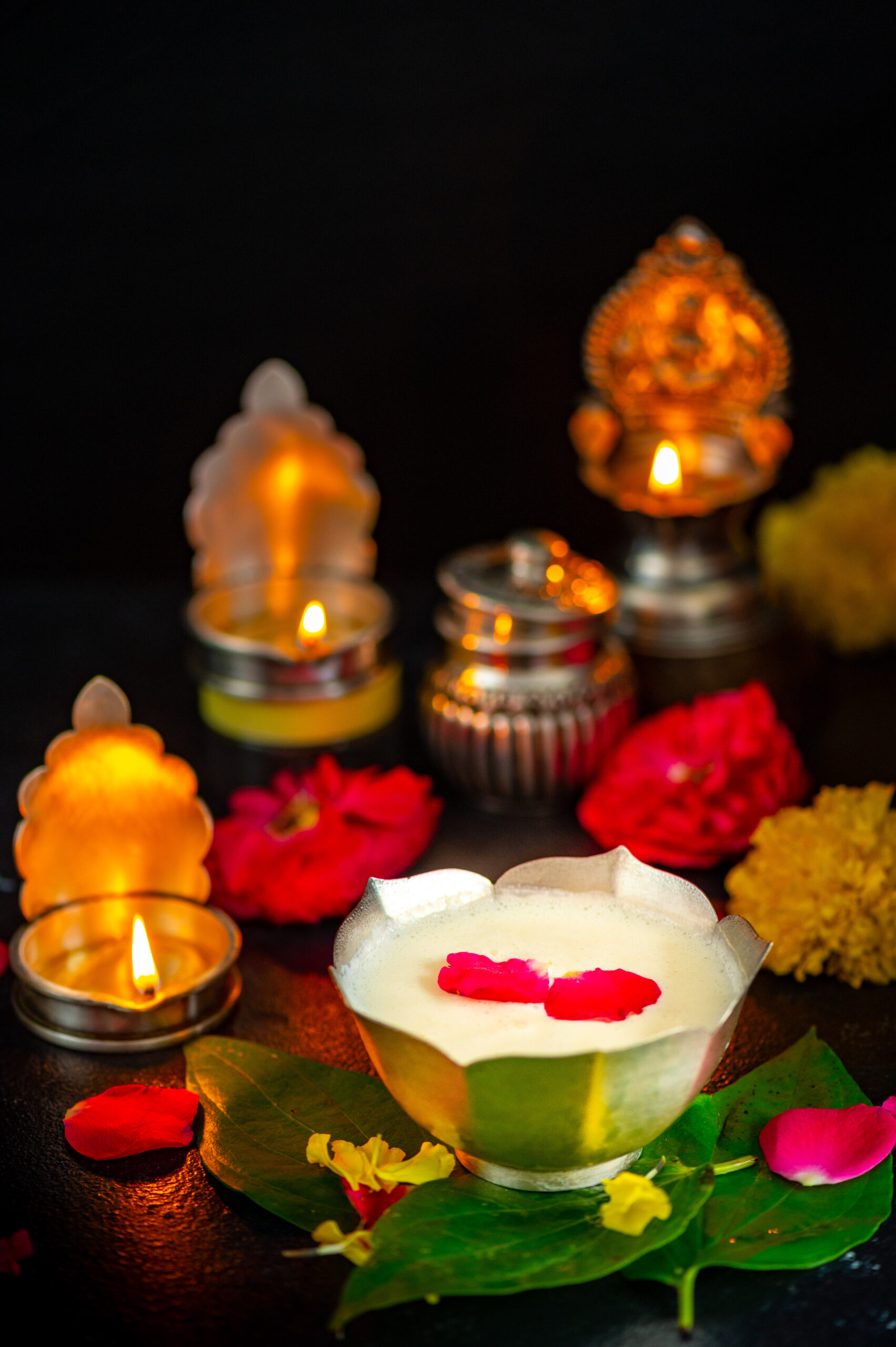
Every Diwali, I usually prepare the ghugra that my mother taught me, as well as boondi. This year, given the circumstances, I wanted to create something lighter, something that would not only have a subtle flavour but would also feel more breezy overall. I also wanted something that would be consumed quickly, given that we cannot have guests for days on end as we usually do. The coconut pudding was perfect on all counts. With the exception of the ceremonial laapsi, there are no other sweets at home for Diwali this year.
But rest assured that we are, finally, in a celebratory mood, and I hope very much that you are too. I have had an instinct for a while now that November would be the turning point when things would begin to get better. The news of Joe Biden being elected the next President of the USA seems to usher the good times in, and as I have American family members, the feeling of hope is quite close to home. Moreover, our Gujarati New Year is also around the corner. This time of year is always a new chapter for us, and the number of lovely traditional dishes I’ve linked from my native cuisine in this post also honours the same.
To return to the uplifting and delicious star of our Diwali this year, this coconut pudding… While I can’t remember who brought this dish to the potluck where I fell in love with it, or who shared their recipe with me afterwards, I’ve been making it for years. You may recall an earlier rendition, with chia seeds, here. This is a different version, and the twist here is rose – re:store’s most preferred flavour, as many of you who have made orders with me know. Somehow, a rose represents so many things at once: love, coolness, fragrance, birth, death, celebration and more. It is a universal symbol, and a timeless flavour. One of the things I love most about roses is that they are locally available and very accessible. It’s so easy for me to bring that aroma and those soft petals into my day.

Coconut Pudding
(Yield: Serves 4-6)
1 cup condensed milk
½ cup cream
1½ cups coconut milk
11 grams agar agar
¾ cup water
1½ tablespoons rose water
Place a saucepan with the water and the agar agar on a double boiler. Stir until the agar agar melts and becomes translucent. Cool and strain.
The method for this dish is quite simple, but agar agar – which is a vegetarian substitute for gelatin – is a bit tricky to work with. If required, add another cup of water while melting it.
Making sure that all the other ingredients are at room temperature, mix them well together. Add the strained agar agar at the end. Pour into cups or moulds.
Leave to set in the refrigerator, and serve chilled. I hope that this dish uplifts your mood as much as it does mine.
I am lighting a lamp this Diwali to wish you all the best for a hopeful and healthy 2021. Even though we have not yet become able to open our homes in the ways we used to, let us open our hearts even wider to make up for it. May the festive season bring you and your family joy!
